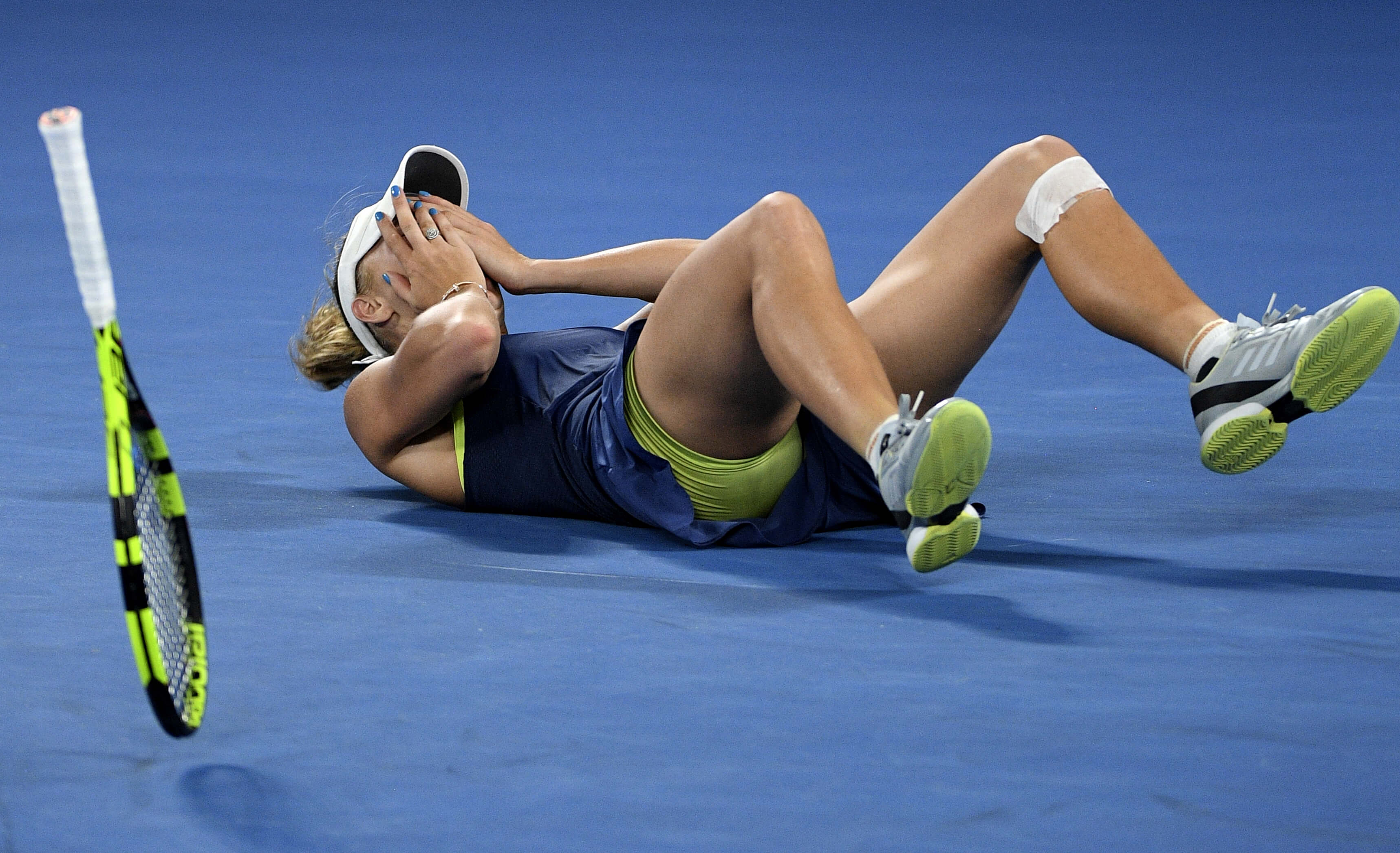
AUSTRALIAN OPEN '19: So many Slam champs over past 2 years
When Serena Williams was at her best, there was never much doubt that she’d be the favorite at pretty much any tournament she entered. While she was off the tour becoming a mom, women’s tennis was as wide open as ever.
Could the Australian Open, where play begins Monday (Sunday EST), end the recent run in which eight women divvied up the past two years’ worth of Grand Slam championships, the first time that had happened since the 1930s?
It began with Williams taking home her seventh title from Melbourne, and 23rd major singles trophy overall, in January 2017. The world didn’t know it at the time, but she was pregnant then; her daughter, Olympia, was born on Sept. 1 of that year. Williams didn’t return to Grand Slam action until last year’s French Open, and while she reached the finals at Wimbledon and the U.S. Open, her title drought continues.
In the meantime, players such as No. 1-ranked Simona Halep, defending Australian Open champion Caroline Wozniacki, Sloane Stephens, Naomi Osaka and Jelena Ostapenko each claimed her first major, while Angelique Kerber and Garbine Muguruza added to their collections.
“It’s a joke when people say, ‘Who is your pick?’ Well, I don’t have a pick, OK?” said Chris Evert, an 18-time major champion who now is an analyst for ESPN.
“The ability, I feel, and the talent is so even with the women,” Evert said, “it really will come down to the small intangibles, like maybe who wants it the most, maybe a little luck, who doesn’t have the really tough matches where they’re exhausted.”
Where — and whether — the top women face each other will be fascinating to keep an eye on.
Williams could meet Halep, last year’s runner-up, in the fourth round.
Halep might need to get past Venus Williams in the third round to get there.
Stephens was drawn into a possible quarterfinal against Kerber.
And so on.
“I don’t think we’ve ever had the depth that we have right now,” WTA CEO Steve Simon said. “We have a very interesting dynamic, with a unique blend of players that you don’t always have.”
Here are other things to know about the Australian Open, the year’s first Grand Slam tournament:
DJOKOVIC’S DOMINANCE
Novak Djokovic returned to his old form in the last half of last season, winning Wimbledon and the U.S. Open to run his major title total to 14, trailing only Roger Federer’s 20 and Rafael Nadal’s 17. Even if he got off to a bit of a shaky start to 2019, Djokovic is still the oddsmakers’ favorite to add to his count with what would be a record seventh trophy in Melbourne. “My focus and objectives are Grand Slams,” the 31-year-old Serb said. “That’s where I want to be able shine and play my best.”
MURRAY’S HIP
This could be it for Andy Murray. At a news conference in Melbourne on Friday (Thursday EST), the three-time major champion teared up as he explained that his surgically repaired right hip is too painful to allow him to compete at a top level and that he will be retiring after Wimbledon — if he even can make it that long. The 31-year-old from Scotland will give it a go at the Australian Open. He’s a five-time runner-up at the event but never won the title.
ROGER AND RAFA
Federer has won the past two titles at Melbourne Park and a total of six, like Djokovic; they could only meet in the final in two weeks’ time. Federer might be 37, but he’s healthy and still looks young on court. The same can’t necessarily be said for Nadal, whose only Australian Open trophy came via a victory over Federer in the 2009 final. Nadal has dealt with injuries in Melbourne over the years, including retiring during the quarterfinals in 2018, and his hard-court record of late is discouraging. But if he can put aside the thigh strain that cropped up in early January, his game is good enough for another deep run.
NEW RULES
Among the changes this year are first-to-10-points, win-by-two tiebreakers at 6-all in men’s fifth sets and women’s third sets; a new way of measuring extreme heat and the allowance for 10-minute breaks ahead of men’s fourth sets — something first seen at last year’s U.S. Open — and, as already was the case, ahead of women’s third sets; 25-second serve clocks.
NEW FACES
Players not everyone is familiar with but who possess the skills to make a Grand Slam breakthrough include Aryna Sabalenka, Daria Kasatkina, Elise Mertens and Kiki Bertens among the women, and Stefanos Tsitsipas, Denis Shapovalov, Karen Khachanov and Alex de Minaur (a 19-year-old Australian) among the men.
___
Follow Howard Fendrich on Twitter at http://twitter.com/HowardFendrich
___
More AP Tennis: https://www.apnews.com/apf-Tennis and https://twitter.com/AP_Sports
The Western Journal has not reviewed this Associated Press story prior to publication. Therefore, it may contain editorial bias or may in some other way not meet our normal editorial standards. It is provided to our readers as a service from The Western Journal.
Truth and Accuracy
We are committed to truth and accuracy in all of our journalism. Read our editorial standards.
Advertise with The Western Journal and reach millions of highly engaged readers, while supporting our work. Advertise Today.












